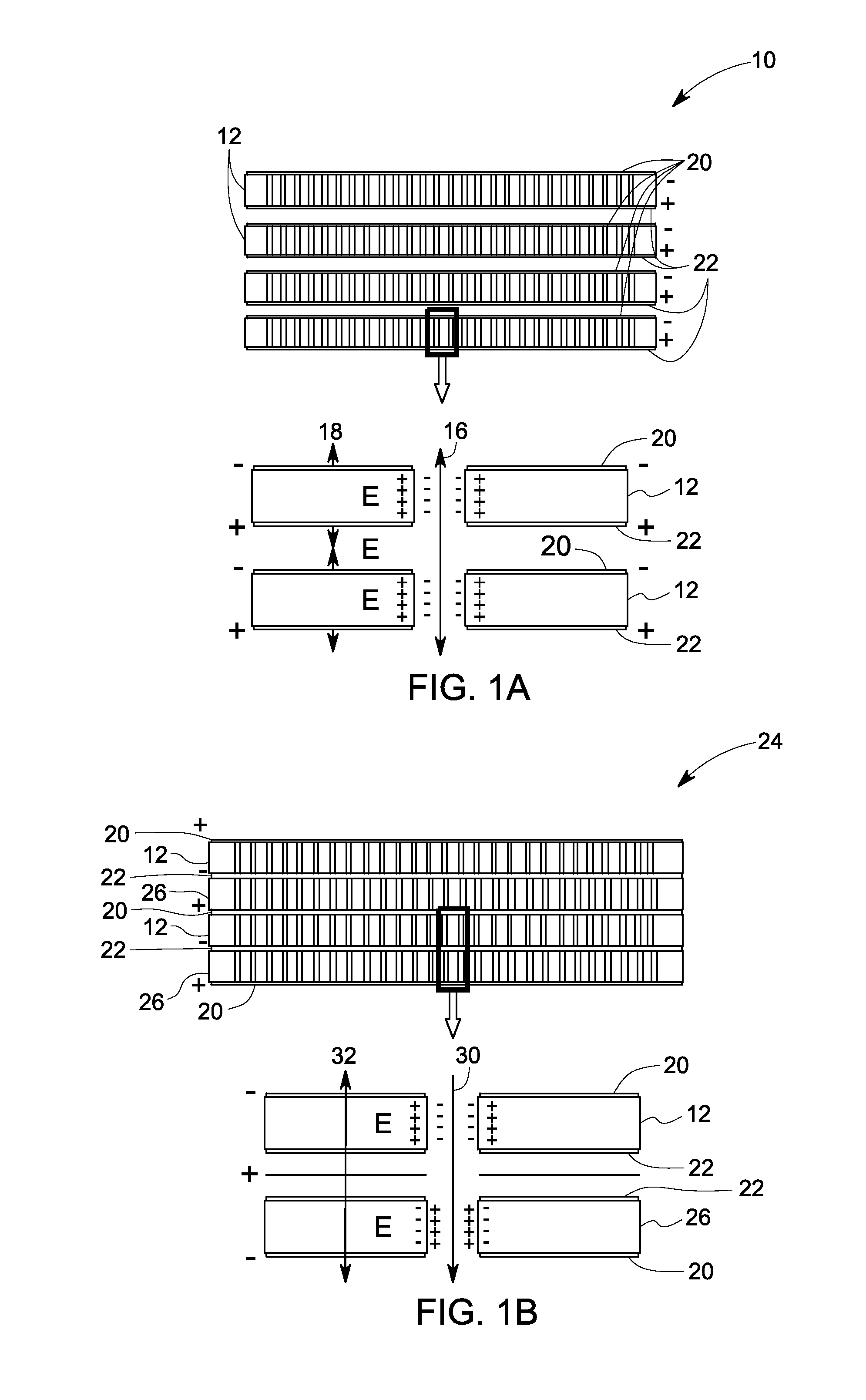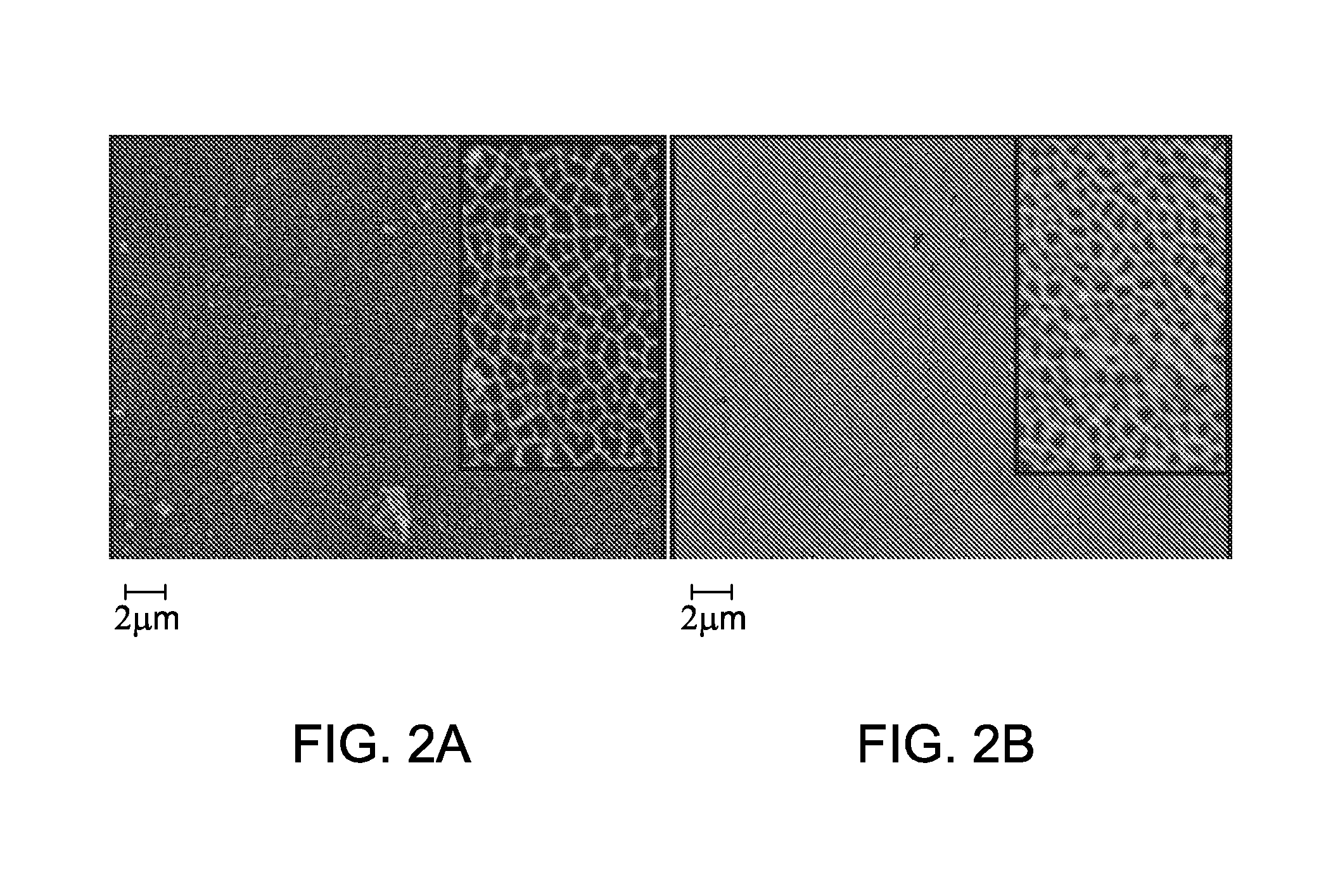Actuation of valves using electroosmotic pump
a technology of electroosmotic pump and valve actuator, which is applied in the direction of positive displacement liquid engine, laboratory glassware, instruments, etc., can solve the problems of inability to meet the voltage requirements or overall size of the voltage requirement, the reliability of the moving pump components is not good, and the mechanical pump is not reliable. achieve the effect of high electric field strength, simple fabrication technique, and high pressur
- Summary
- Abstract
- Description
- Claims
- Application Information
AI Technical Summary
Benefits of technology
Problems solved by technology
Method used
Image
Examples
example 1
Fabrication of EOPs
[0102]For this example, the need for metallization of each electroosmotic membrane in the EOP stack, assembly and handling of the electroosmotic membranes in a disposable cartridge, and manufacturing cost and fragility of the nanoporous membranes, were the primary challenges.
[0103]Materials: The Anodisc® membranes are an in-house product (GE Healthcare), which are available in a package of 100 membranes. The silica membranes were created in-house by coating GE's Anodisc® product with SiO2 using either treatment in a sol-gel solution or deposition within an atomic layer deposition chamber. Silica sol gel was produced using raw materials from Sigma Aldrich, including TEOS (Tetraethyl orthosilicate), CAT #86578-250 ml. ALD coating was performed using tris (tert-butoxy) silanol and trimethyl-aluminum as the precursors. Pt, Ag or Au electrodes were purchased from Good-fellow Cambridge Limited. The Anodisc® membranes are used as bare Anodisc® and also after the silica t...
example 2
Determination of Stall Pressure by Increasing Number of Membranes
[0107]Experimental results were generated measuring the stall pressure of a single Anodisc® EOP, and a double stack membrane using low-voltage, high pressure EOPs. Flow rates were measured using a commercial MEMS flow sensor as increased back pressure was applied to the pump. There was a 2× increase in pumping pressure within the double stack membrane, when compared to single membrane EOP, as shown in FIG. 3. The pumping pressures could be tuned to application-specific values based on the intelligent assembly scheme, as shown in FIG. 1B. The flow rates were measured using a commercial MEMS flow sensor, Sensirion CMOSENS LG16-1000D, after the increased pressure load was applied to the pump. The pumping pressure may be increased or decreased according to the pressure requirement for specific applications by increasing or decreasing the number of membranes in the EOP.
example 3
EOP Operation Using Various Electrode Materials
[0108]Most electroosmotic pumps work by passing hydrolyzed ions at the surface of the metal electrodes, thus releasing hydrogen and oxygen gas at the opposite ends of the nanopores of the membranes as described in FIG. 5A-5C. In three different EOPs, three different electrodes were selected. In the first example, a Pt electrode was used where a standard hydrolysis reaction took place using a standard hydrolysis driven pump. The flow rate is comparatively less in case of this EOP with Pt electrodes. The advantage of this EOP is the use of an inert electrode and standard pump configuration. Still, gas accumulation even at low driving voltages induces bubble formation and pH fluctuation, which is an increased burden in the dense nanoporous stacks, as shown in FIG. 5A. In the second example, silver oxide was used as the metal oxide electrode, as shown in FIG. 5B, where the redox reactions took place on the electrode surface which minimized ...
PUM
| Property | Measurement | Unit |
|---|---|---|
| electric field | aaaaa | aaaaa |
| thickness | aaaaa | aaaaa |
| electric fields | aaaaa | aaaaa |
Abstract
Description
Claims
Application Information
 Login to View More
Login to View More - R&D
- Intellectual Property
- Life Sciences
- Materials
- Tech Scout
- Unparalleled Data Quality
- Higher Quality Content
- 60% Fewer Hallucinations
Browse by: Latest US Patents, China's latest patents, Technical Efficacy Thesaurus, Application Domain, Technology Topic, Popular Technical Reports.
© 2025 PatSnap. All rights reserved.Legal|Privacy policy|Modern Slavery Act Transparency Statement|Sitemap|About US| Contact US: help@patsnap.com



